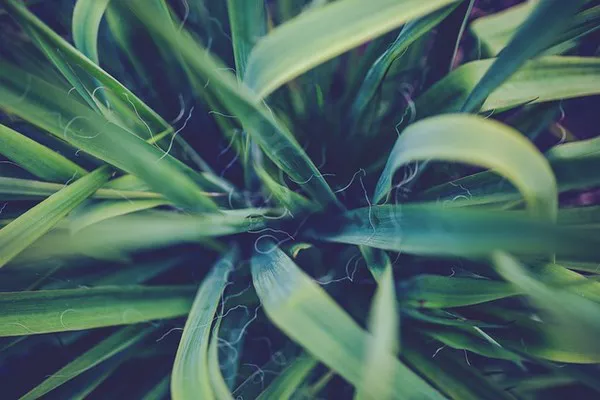Yucca plants are well-known for their striking appearance, resilience, and adaptability, making them popular choices for both indoor and outdoor landscaping. These plants, native to the Americas, are available in a variety of species, each with its unique growth pattern and size. This article delves into the world of Yucca plants, exploring their growth potential and factors that influence their size.
Yucca Plant Overview
Yucca is a genus of perennial shrubs and trees primarily found in arid regions of North and Central America. Some species have also adapted to more tropical environments. While Yucca plants vary in size, shape, and growth habits, their general characteristics include long, sword-like leaves and a visually striking rosette form. Yuccas often produce tall flowering spikes adorned with bell-shaped white or cream-colored blossoms. Their unique appearance and ability to thrive in diverse conditions have made Yucca plants a favorite among gardeners and landscapers.
Factors Influencing Yucca Plant Size
Understanding the factors that influence the growth and size of Yucca plants is essential for their successful cultivation. Several key elements impact how big a Yucca plant will ultimately become:
Species and Variety: The size of a Yucca plant is largely determined by its species and variety. Some Yucca species are naturally larger and can grow into small trees, while others remain more compact and suitable for container gardening.
Environmental Conditions: The environmental conditions in which a Yucca plant is grown have a significant impact on its size. Factors like sunlight, soil type, temperature, and humidity levels play a pivotal role in determining how big a Yucca plant can grow.
Soil Quality: Yucca plants prefer well-draining soil and can tolerate poor soil conditions. However, rich, fertile soil can encourage faster growth and larger Yucca plants. Soil quality can also influence the spread of Yucca plants, with those in better soil conditions potentially producing more pups or offsets.
Watering Regimen: Yuccas are drought-tolerant plants and prefer infrequent, deep watering rather than frequent shallow watering. Overwatering can lead to root rot and negatively impact the size and health of the plant.
Pruning and Maintenance: Pruning can help control the size of Yucca plants. Regularly removing dead or damaged leaves can promote a more compact growth habit, while allowing the plant to develop freely may lead to a more expansive appearance.
Size Variations in Yucca Species
The size of Yucca plants can vary significantly among different species. Let’s explore a few well-known Yucca species and their typical size ranges:
Yucca filamentosa (Adam’s Needle): This species is relatively small and compact, typically growing up to 3 feet in height and 4 to 5 feet in width. Yucca filamentosa is a popular choice for smaller gardens and container planting.
Yucca elata (Soaptree Yucca): In contrast, Yucca elata is known for its tall, tree-like appearance. It can reach heights of 15 to 20 feet or more, with a similar spread. This species is often found in arid desert regions.
Yucca rostrata (Beaked Yucca): Yucca rostrata is a striking Yucca species that can grow into a small tree, reaching heights of 10 to 15 feet. Its distinctive blue-green leaves make it a sought-after addition to landscaping.
Yucca gloriosa (Spanish Dagger): This Yucca species typically grows to heights of 6 to 10 feet with a similar spread. Its spiky leaves and robust structure make it a prominent choice for xeriscaping.
Yucca schidigera (Mojave Yucca): The Mojave Yucca can reach heights of 6 to 12 feet, making it a relatively large species. Its impressive, tall flower spikes add to its visual appeal.
Cultivation Tips
If you want to cultivate Yucca plants and control their size, consider the following tips:
Select the Right Species: Choose a Yucca species that suits your space and preferences. If you have limited space, opt for smaller varieties, while larger yards can accommodate taller species.
Sunlight: Yucca plants thrive in full sun to partial shade. Ensure they receive adequate sunlight to promote healthy growth.
Well-Draining Soil: Plant Yuccas in well-draining soil to prevent root rot. Sandy or gravelly soil is ideal.
Infrequent Watering: Water your Yucca plants sparingly, allowing the soil to dry out between waterings. Overwatering is a common mistake that can stunt growth.
Pruning: Prune dead or damaged leaves and flower spikes as needed. This can help maintain the desired size and appearance of the plant.
Protection from Extreme Cold: If you live in a region with cold winters, protect your Yucca plants from frost and freezing temperatures to ensure their survival and continued growth.
Conclusion
Yucca plants are a diverse and visually striking addition to any garden or landscape. Their size varies significantly depending on the species, environmental conditions, and maintenance practices. Whether you prefer a compact Yucca for a small garden or a towering Yucca that resembles a tree, there’s a species to suit your preferences.By understanding the factors that influence Yucca plant size and following appropriate cultivation practices, you can enjoy the beauty and resilience of these unique plants in your outdoor or indoor spaces. Proper care and attention to their needs will ensure that your Yucca plants reach their full potential and continue to thrive for years to come.


